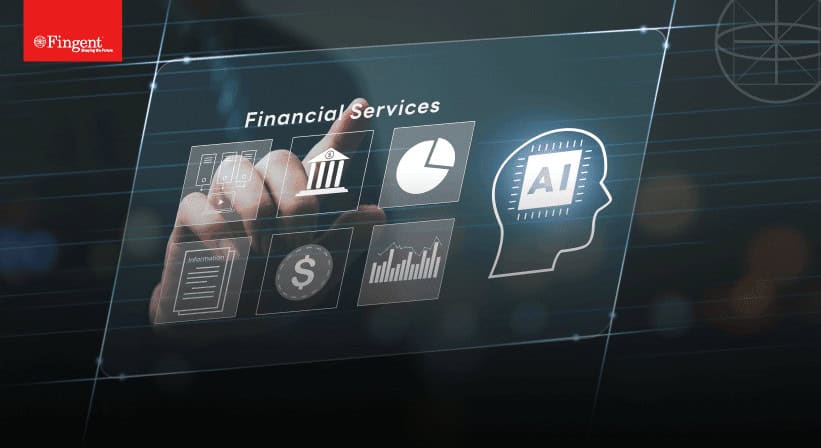Industry experts weigh in on the adoption of AI and ML in software development
The Experts Speak: The Adoption of AI and ML in Software Development
Artificial Intelligence (AI) and Machine Learning (ML) is transforming nearly every industry. In our previous blogs, we discussed how it is transforming finance, customer service, supply chain & logistics, and other industries. In this blog, we will talk about how AI and ML are radicalizing the software industry. We will look at the benefits of the adoption of AI and ML in software development and what industry experts have to say about it.
The Fundamental Shift in Software Development
At its very core, software development involves writing reams of rule-based code. Traditionally, developers had to specify every detail to let the system know what to do, and then customize the features of each piece of technology. With the adoption of Artificial Intelligence and Machine Learning, this process becomes much easier.
Author, scientist and Google research engineer Pete Warden puts it well:
“The pattern is that there’s an existing software project doing data processing using explicit programming logic, and the team charged with maintaining it find they can replace it with a deep-learning-based solution … What I see is that almost any data processing system with non-trivial logic can be improved significantly by applying modern machine learning. This might sound less than dramatic when put in those terms, but it’s a radical change in how we build software. Instead of writing and maintaining intricate, layered tangles of logic, the developer has to become a teacher, a curator of training data and an analyst of results.”
Practically, this means a revolutionary change in the very essence of software development.
AI and ML in action
“Modern IT environments are incredibly (and increasingly) complex and ever-changing, leading to large amounts of time and resources devoted to monitoring, troubleshooting, and course correcting,” says Phil Tee, Cofounder, and CEO of Moogsoft Inc. “It’s a reactive position for most companies, but when teams use AIOps technology they can leverage change-tolerant algorithms and access indexed information. This allows them to spend more time focused on proactive, meaningful work rather than fixing the same problems repeatedly or spending time managing rules and filters.”
Artificial Intelligence and Machine Learning can transform the entire Software Development Life Cycle (SDLC). Three ways in which it does this are:
- Synthesis of large volumes of data to predict the success or failure and business value of a project.
- Predicts accurate project delivery timelines, delivers project status updates and creates project schedules.
- Automatic diagnosis and rectification of problems in the project.
Let us consider the details of how this is achieved.
1. Turn Idea into Code Quickly and Effectively
The process from the inception of an idea to its actual execution into workable code is time-consuming and complex. Traditionally, developers must go through a long process of trial and error to get the basic code in place. Obtaining funding approvals for the project is complicated as well and requires getting the project to a prototype level even before requesting for funds. All this can be made easy with AI and ML. In the future, the system itself could learn to process ideas from natural language and suggest machine-executable code without human intervention. AI and ML are making this possible even now by teaching systems to suggest code completion. This way systems will slowly learn to generate code through predefined modules.
Considering the viability of a project also becomes easier and faster with AI and ML. Machine learning can help developers identify and prioritize the effects of the project based on business risk. This way, time and effort on unnecessary regression testing and rectification can be eliminated. A sound decision on whether the project is feasible or not can thus be made in the earlier stages.
Related Reading: How to accelerate your business growth with Robotic Process Automation
2. Effective Project Management
Through pattern detection, AI and ML can be trained to use details of past projects to provide accurate estimates of the current project. Historical project details like bugs, test phases, actuals, and estimated values can be fed into the system and used to fine-tune the level of accuracy. Through this, the system will learn to predict accurate delivery schedules and create work schedules for individual members of the team. Risk Management, as well as Resource Management, can be better executed this way.
3. Automation of Testing and Error Detection
Pattern Detection is one of the most valued benefits of machine learning. This can be used effectively to automate the testing and debugging process in software development. One of the challenges of software testing is to come up with a list of most likely cases and scenarios that could affect the program’s performance. Through pattern detection, systems can look at past logs and generate a test case list automatically. They can also identify and classify error types and in time learn to automatically fix these errors.
Joe Colantonio, an expert on software automation and performance testing discusses what is possible with AI and ML. “Wouldn’t it be great if you could answer the classic testing question, “If I’ve made a change in this piece of code, what’s the minimum number of tests I should be able to run in order to figure out whether or not this change is good or bad?” he says. “Many companies are using AI tools that do just that. Using ML, they can tell you with precision what the smallest number of tests is to test the piece of changed code. The tools can also analyze your current test coverage and flag areas that have little coverage, or point out areas in your application that are at risk.”
Revolutionizing IT
Apart from making a big difference in the software development process, Artificial Intelligence and Machine Learning will also change the way applications are made. With the power of AI and ML, developers will be able to design apps, which will be able to listen, think, speak, reason and make decisions. Vision Recognition technologies, Optical character recognition, and many more AI-powered capabilities will help developers create faster, smarter and better apps in the future. At Fingent, we endeavor to put this into action every day. There is no area that is immune to the changes that AI and ML can bring and we are determined to stay on top of it.
Related Reading: Top Artificial Intelligence Trends to Watch Out for In 2019
Stay up to date on what's new

Recommended Posts

03 Jul 2024 Financial Services
AI in Business: Preparing Leaders For The Revolution
AI in Business is a present reality! It’s a building revolution that is all-encompassing and is redefining business operations. You have only two options. Either ride on the crest of……

20 Jun 2024 Healthcare B2B
AI in Healthcare: Enhancing Patient Outcomes and Experience
Artificial Intelligence is a multi-talented assistant and has proven its worth in the healthcare industry. Healthcare organizations have found innumerable ways to use AI, from record maintenance to patient assistance.……

08 May 2024 Financial Services B2B
AI in Financial Services: Use Cases and Applications
Achieving perfection is no easy process. It is not impossible either. It takes a lot of effort and hard work but with the help of Artificial Intelligence, this process can……

24 Apr 2024 B2B
A Leader’s Blueprint for AI Success
How Are Businesses Using AI? The verdict is crystal clear—leaders today must embrace AI solutions to stay ahead of the curve and survive in the rapidly evolving business landscape. AI……
Featured Blogs
Stay up to date on
what's new













